This millet noodles recipe is perfect if you’re craving a healthy and delicious meal, but don’t have a lot of time on your hands. The millet noodles are a healthy alternative to traditional ones which are both gluten-free and fibrous. You’ll forget all about chow-mein when you try out this delicacy!
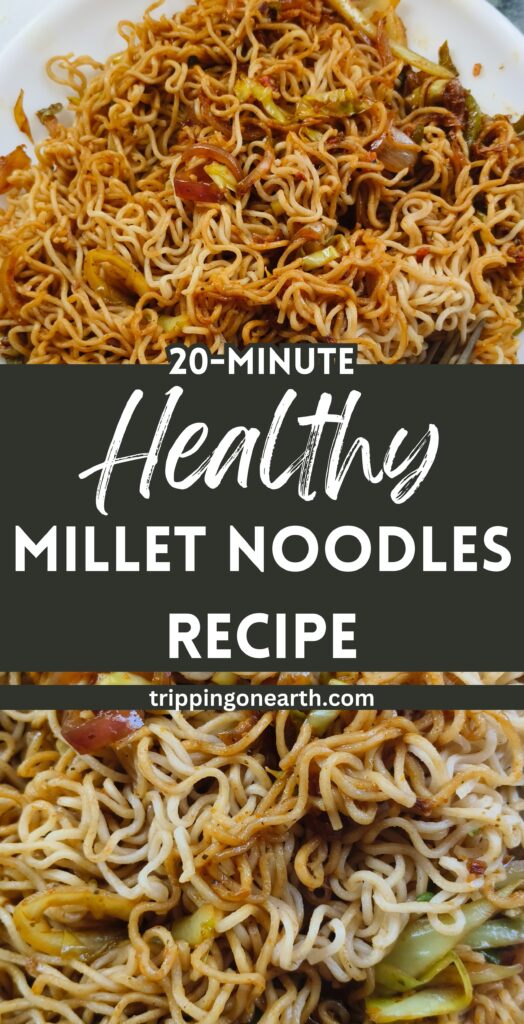
Since I’m on a fitness spree, this millet noodles recipe has become the ideal cheap day meal that doesn’t let the unnecessary carbs and fats spike up.
It is a wholesome and filling dish, that is bursting with the umami flavors from the soy sauce and incorporates a ton of veggies which keeps the essential nutrients and crunchiness high.
Plus, it is a low-carb recipe that you can whip out in under 30 minutes and can be a great last-minute dinner.
And, you can make it completely gluten-free by replacing the soy sauce with the gluten-free version.
Millet Noodles Health Benefits
These noodles cheekily add millet to your diet, which is extremely nourishing for your gut health, and also boosts the immune system.
Extremely nutritious: Millets are packed with iron, manganese, phosphorus, and other B vitamins, and they also help in red blood cell formation.
Gluten-free: These noodles are naturally gluten-free, so people with celiac disease can enjoy it wholeheartedly!
High in antioxidants: Millets contain various antioxidants like flavonoids and phenolic compounds.
Rich in fiber: Millets are not only nutrient-dense, but they also promote dietary health, because of their high fiber count.
Helps in weight management: Millets are a nutritious and low-calorie option. The fiber, protein, and complex carbs give you a feeling of satisfaction, and thus it prevent overeating.
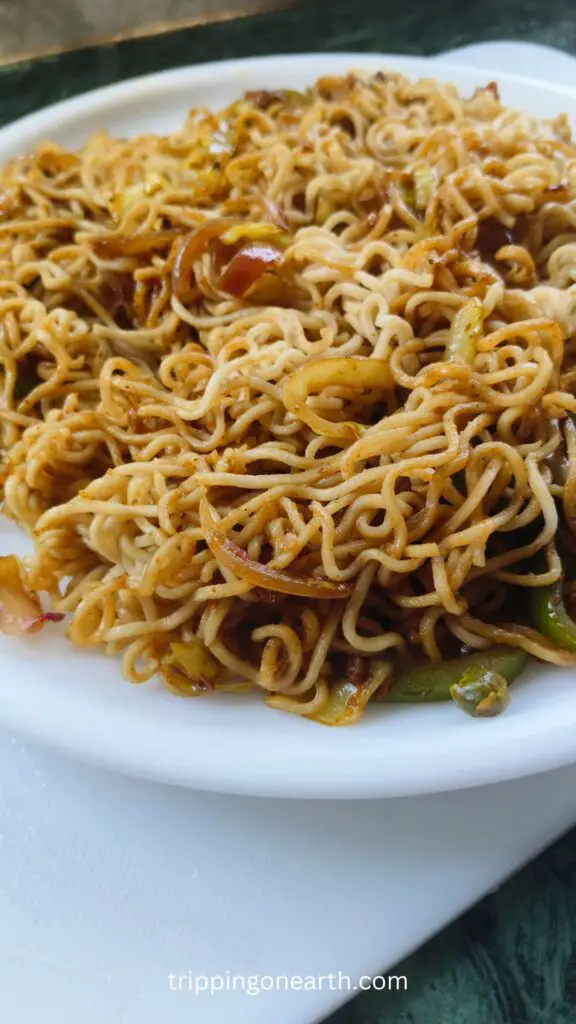

Tools You’ll Need
- Pot: To boil the noodles.
- Strainer: To filter out the water from the noodles after boiling.
- Wok: You can also use a deep skillet to make the dish.
- Spatula: To saute and stir.
Ingredients in This Millet Noodles Recipe
Millet Noodles: They have a subtle nutty flavor which gives this dish a unique flavor profile. Also, they are gluten-free!
Onions: Onions add crunchiness and a slightly sweet flavor. It also dials up the aroma along with ginger and garlic.
Ginger & Garlic: The mixture of ginger and garlic gives a ton of aromatic goodness. Use a store-bought paste or make it at home.
Capsicum: For some added crunchiness. Plus, they are packed with vitamin C!
Cabbage: Cabbage adds a certain summery freshness as well as brightens the recipe.
Green Chilies: This is optional, I like spicy food that’s why I add them, but you can skip them.
Red Chili Sauce: It has a nice balance of sweet and spicy.
Tamari: For a spectacular umami flavor! Tamari makes this dish entirely gluten-free!
Vinegar: For some sourness in the mix, vinegar is a great agent. You can also add some lemon juice.
Tastemaker: It basically breathes life into the noodles. You can make it at home by combining turmeric and garam masala powder together, or buy it from a convenience store.
Water
Oil
Salt & Pepper
How to Make Millet Noodles
Boil the Noodles:
Boil water in a pot, add salt and the noodles. Cook them for 5-6 minutes till al dente.
Strain them in a sieve, and run cold water over them to avoid overcooking. You can also pour over some oil to keep the noodles from sticking together. Let them aside.
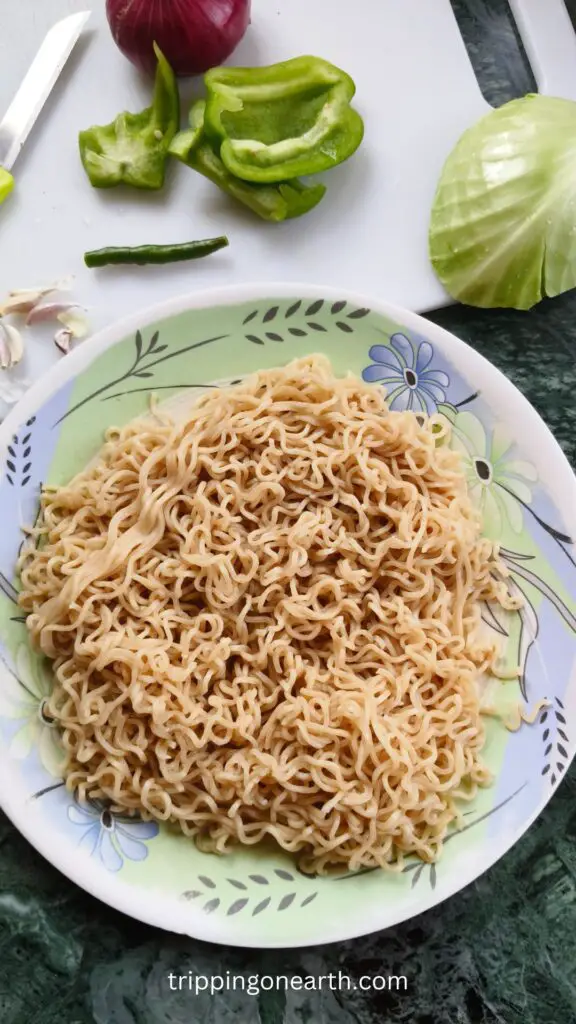

Saute the Veggies:
Take a wok, switch on the flame to high, and add oil. Once the oil has heated enough, add onions and saute them till translucent. Then add ginger-garlic paste, and again saute for 30 seconds on high flame.
Keep the flame on high, add capsicum, cabbage, and green chilies into the mix, and saute them for a minute.
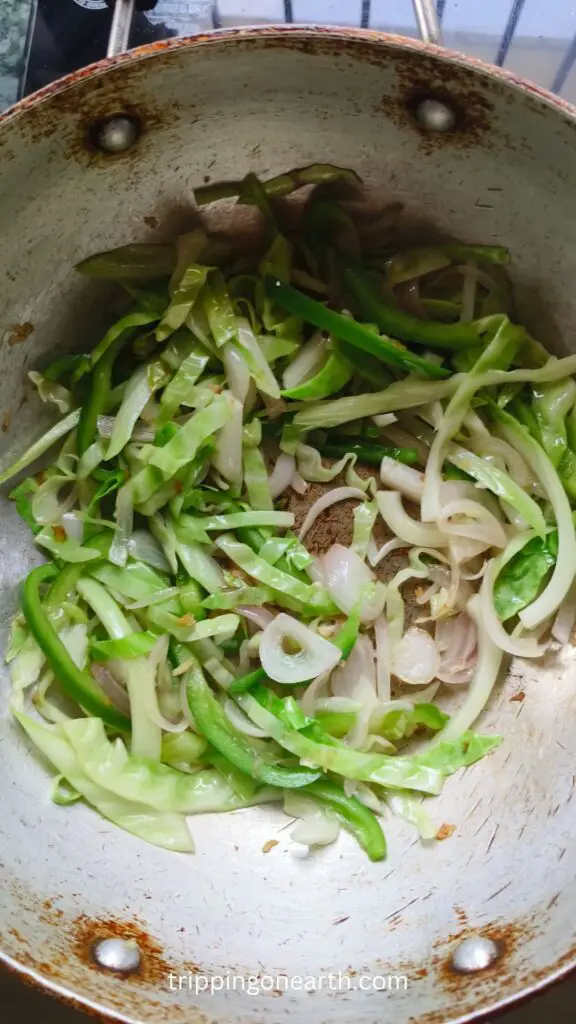

Add Sauces:
Add tamari and red chili sauce, and mix them properly. Now add tastemaker, and salt, and again mix them. If you think the veggies have become dry, add a splash of hot water for some moisture, and to avoid burning.
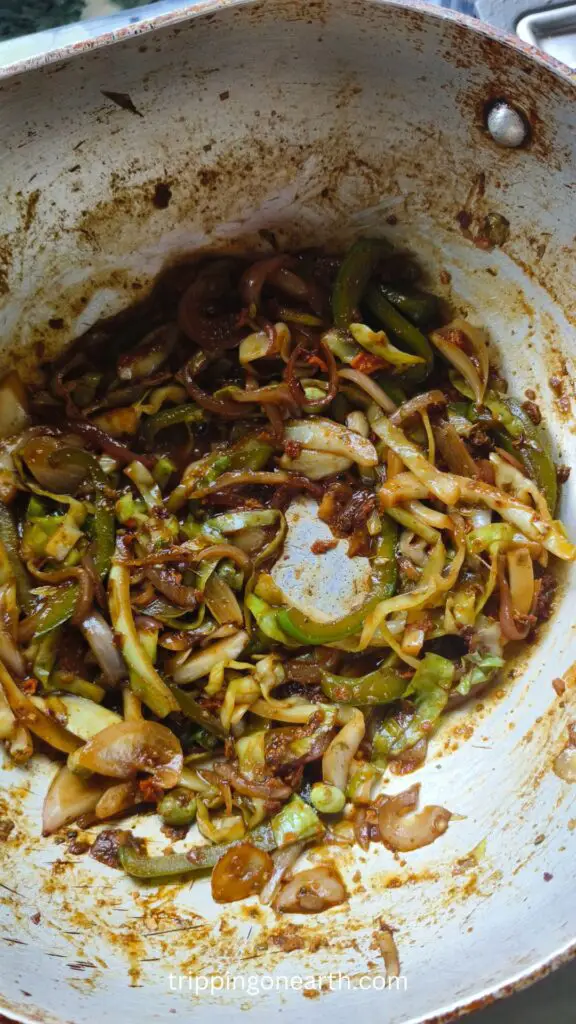

Combine:
Finally, combine the noodles with the mixture, and coat the noodles properly with the sauces.
Sprinkle on some chopped coriander, and your millet noodles are ready to be served hot.
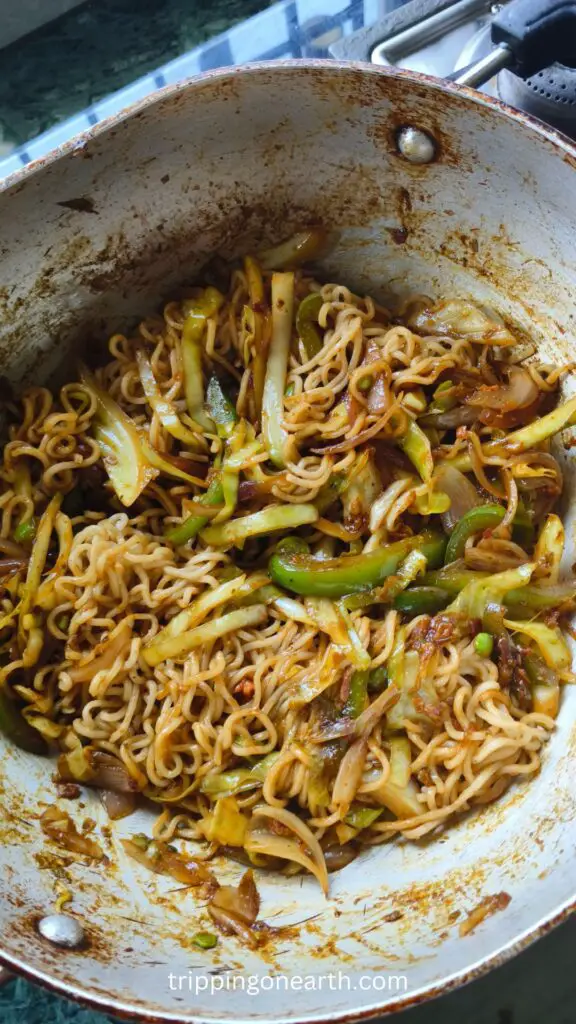

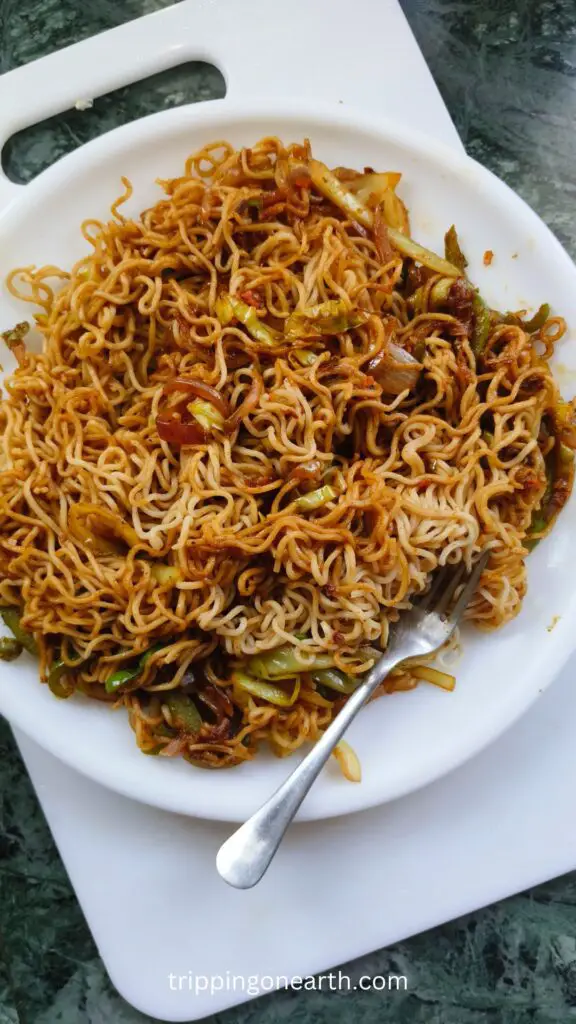

Tips & Variations
Add more veggies: Try to add in red and yellow bell peppers, and carrots to make a more wholesome meal. You can also substitute onions with scallions for a more aromatic taste.
Use soy sauce: I used tamari to make this recipe gluten-free. However, if you don’t have any gluten-related problems, you can add soy sauce instead of tamari.
Keep the flame high: Keep in mind that these noodles and veggies are cooked on a high flame to keep the crunchiness intact.
Add vinegar/lemon juice: If you don’t have vinegar at your disposal, or you want to change the flavor a bit, squeeze some lemon juice into the mix for some citrus acidity.
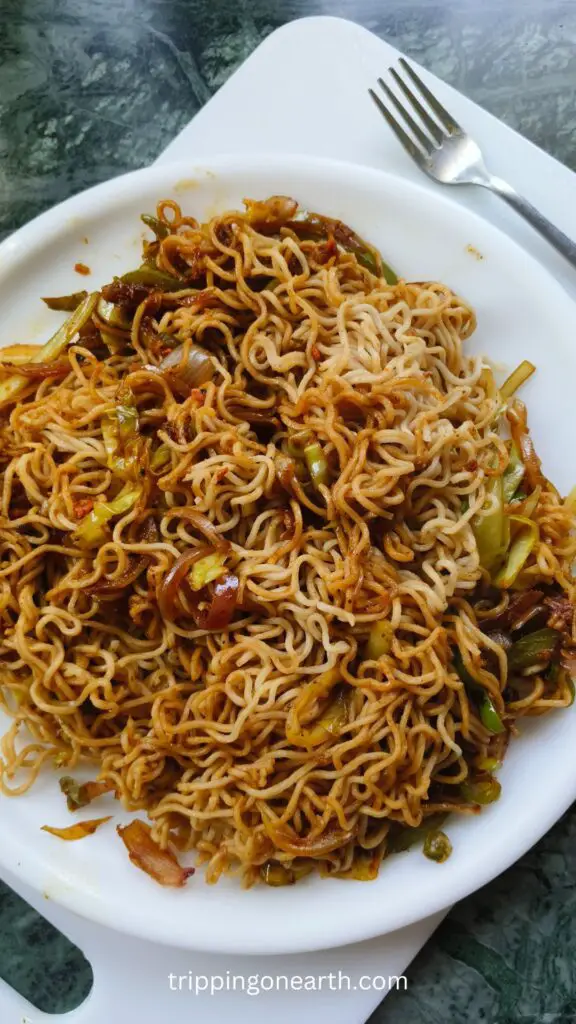

Serving Options
This is a dish that can be enjoyed for breakfast, lunch, or dinner.
I tend to eat it with a glass of masala shikanji, or any kind of juice on the side.
You can also pair it with a curry dish like paneer butter masala, or chicken tikka masala, and also with a coleslaw salad.
How to Store
This noodle delicacy is best enjoyed fresh.
But, if you’ve got some extra noodles left, store them in an air-tight container and then place it in the fridge for 2-3 days, though the texture will not remain the same as before.
Obviously, this goes for the freezer as well, so I do not recommend it.
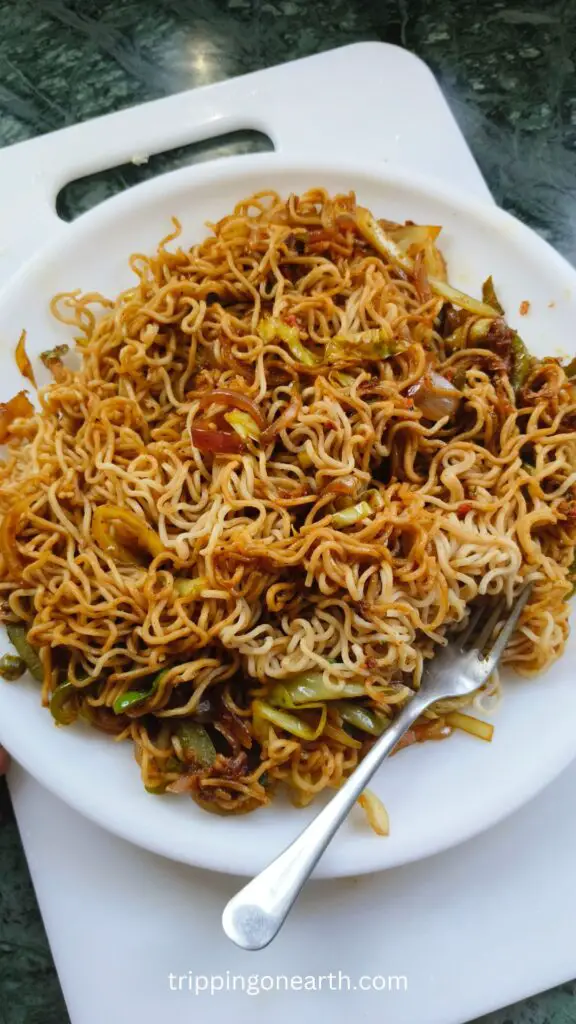

Why You’ll Love This Millet Noodles Recipe
- Easy and quick to make.
- It is easily customizable.
- Not only is it delicious, but it is also loaded with veggies, making it a healthy option as well.
- You can make it any time of the day.
More Noodle Recipes
Please rate and comment if you make this millet noodles recipe so I know how much you like them.
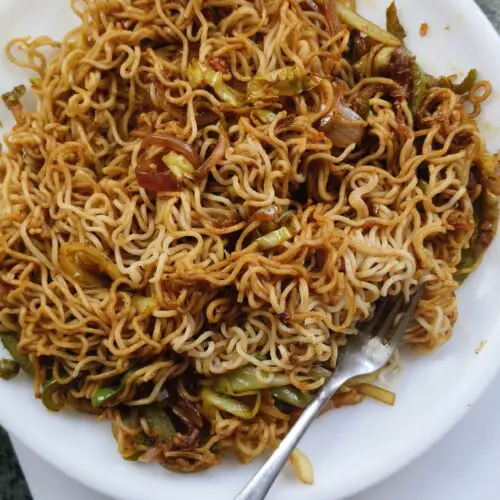

20-Minute Healthy Millet Noodles Recipe
Equipment
- Pot
- Strainer
- Wok/Skillet
- Spatula
Ingredients
For the Tastemaker:
- 1 tsp Garam Masala Powder
- ½ tsp Red Chili Powder
For the Noodles:
- 1 pack Millet Noodles
- Water as required
- 2 tbsp Oil
- 1 large Onion (sliced)
- 2 tbsp Ginger-Garlic Paste
- 2 Green Chilies (chopped)
- ½ medium Capsicum (julienned)
- ⅛ medium Cabbage (julienned)
- 1 tsp Tamari
- 1 tsp Red Chili Sauce
- Prepared Tastemaker
- Salt to taste
- Coriander leaves (optional)
Instructions
- Boil water in a pot, add salt and the noodles. Cook them for 5-6 minutes till al dente.
- Strain them in a sieve, and run cold water over them to avoid overcooking. You can also pour over some oil to keep the noodles from sticking together. Let them aside.
- Take a wok, switch on the flame to high, and add oil. Once the oil has heated enough, add onions and saute them till translucent. Then add ginger-garlic paste, and again saute for 30 seconds on high flame.
- Keep the flame on high, add capsicum, cabbage, and green chilies into the mix, and saute them for a minute.
- Add tamari and red chili sauce, and mix them properly. Now add tastemaker, and salt, and again mix them. If you think the veggies have become dry, add a splash of hot water for some moisture, and to avoid burning.
- Finally, combine the noodles with the mixture, and coat the noodles properly with the sauces.
- Sprinkle on some chopped coriander, and your millet noodles are ready to be served hot.
Notes
- Add more veggies: Try to add in red and yellow bell peppers, and carrots to make a more wholesome meal. You can also substitute onions with scallions for a more aromatic taste.
- Use soy sauce: I used tamari to make this recipe gluten-free. However, if you don’t have any gluten-related problems, you can add soy sauce instead of tamari.
- Keep the flame high: Keep in mind that these noodles and veggies are cooked on a high flame to keep the crunchiness intact.
- Add vinegar/lemon juice: If you don’t have vinegar at your disposal, or you want to change the flavor a bit, squeeze some lemon juice into the mix for some citrus acidity.

